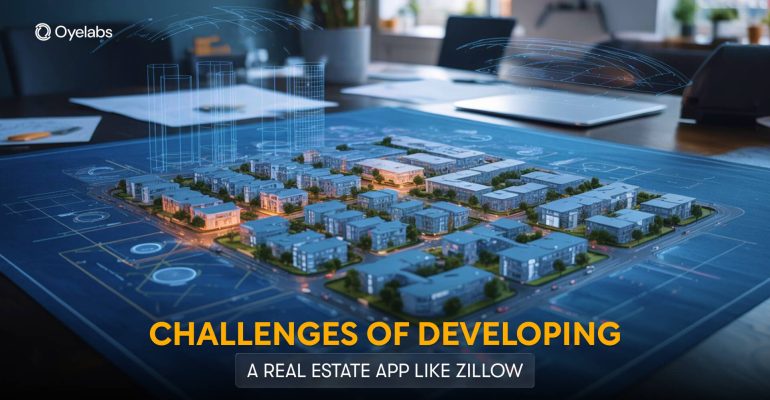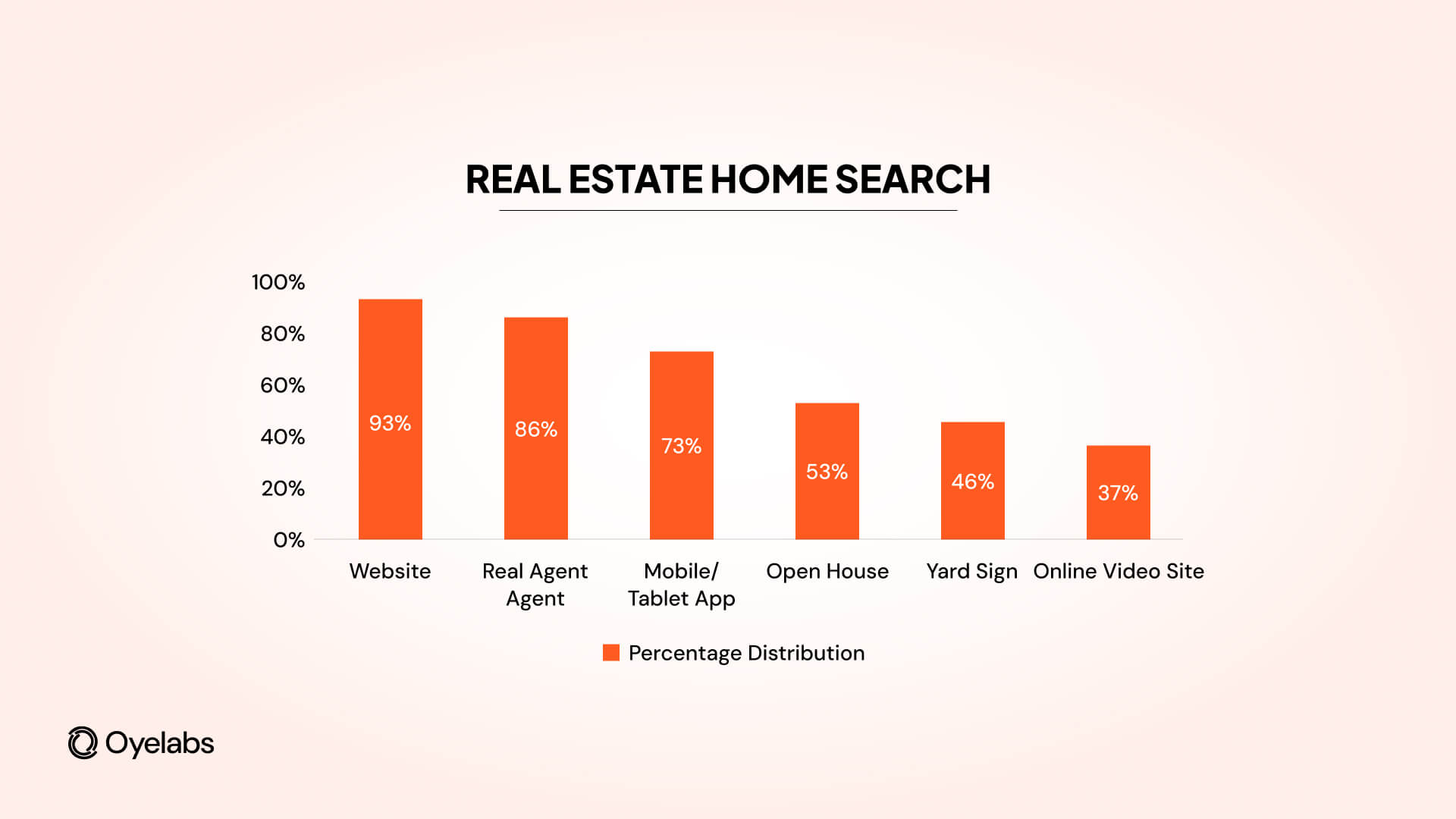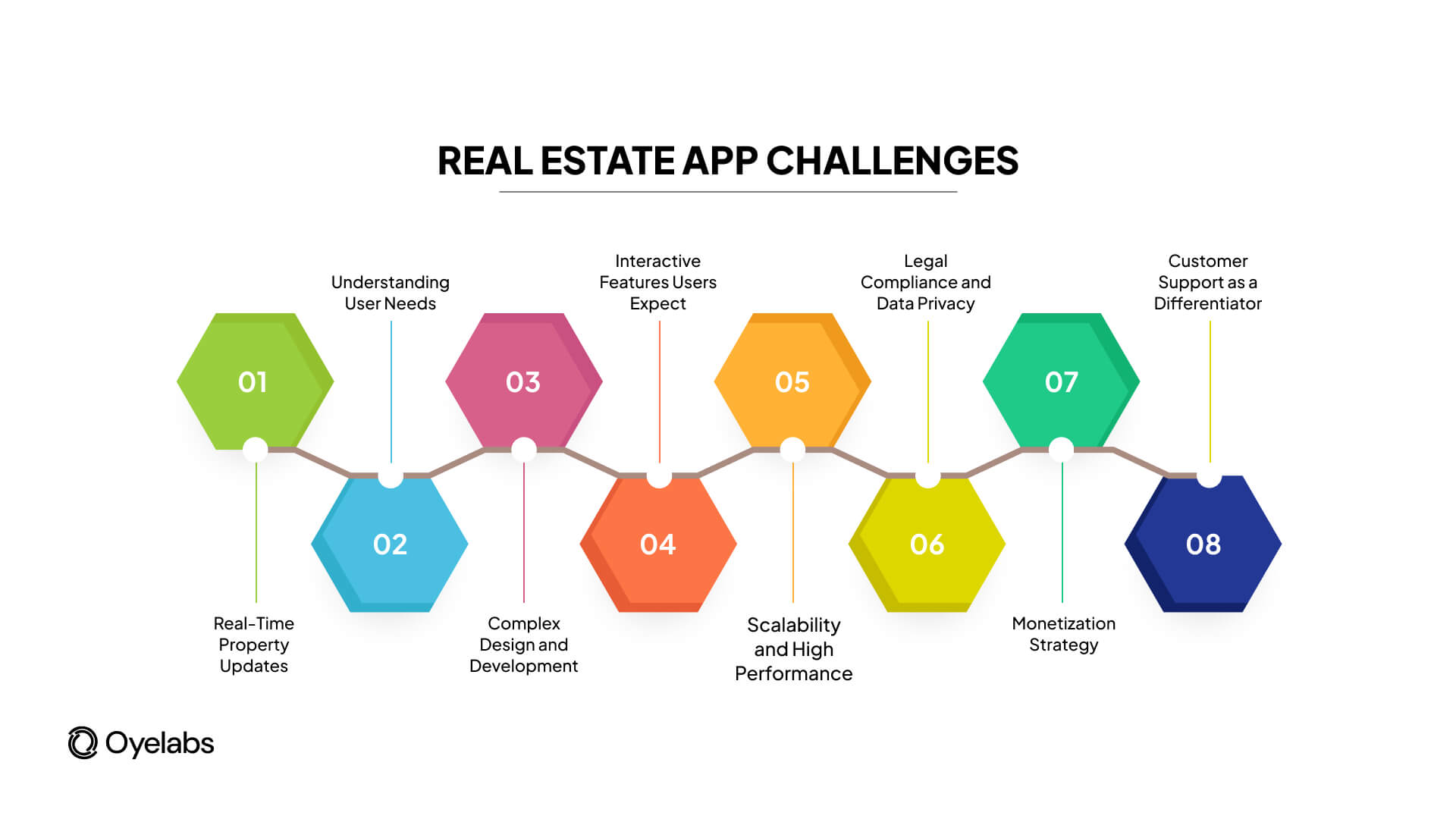Launching a Platform Like Zillow? Be Ready for These Challenges

Launching a Platform Like Zillow? Be Ready for These Challenges
Last Updated on August 26, 2025
Buying, selling, or renting a home isn’t about endless phone calls or office visits anymore. It’s all happening online with just a few clicks. Real estate apps like Zillow have completely changed the game, making property searches faster, smarter, and way more convenient for everyone. This shift has opened exciting opportunities for new businesses, but building a app that can match those standards isn’t simple.
From managing huge amounts of property data to earning user trust, there are plenty of challenges along the way. In this blog, we’ll dive into the biggest hurdles you’ll face when creating your own real estate marketplace app.”
Challenges of Developing a Real Estate App
 1. Real-Time Property Updates
1. Real-Time Property Updates
Outdated property data is the fastest way to lose user trust. Imagine a buyer falling in love with a home on your app, only to find out it sold weeks ago. Or worse, discovering that the listed price is completely inaccurate. In real estate, information that isn’t up to the minute isn’t just inconvenient, it’s deal-breaking.
Why this is a challenge:
- MLS (Multiple Listing Service) systems are highly fragmented, each with its own update frequency. Some refresh every 15 minutes, while others only update once per day.
- Without real-time synchronization, you risk duplicate listings, missing properties, or stale data.
- uyers and agents have grown accustomed to property rental app like Trulia, and Redfin, which provide instant updates and accurate property information across all devices.
How to overcome it:
- Integrate MLS/IDX APIs and work with trusted real estate data providers that offer real-time feeds.
- Build automated pipelines that ensure price changes, new listings, and property removals are reflected instantly.
- Use scalable backend infrastructure like Kafka, Firebase, or AWS Lambda to process high-frequency updates with minimal lag.
2. Understanding User Needs
A real estate app is not just about property listings, it’s about addressing the needs of very different user groups. From first-time homebuyers to experienced investors, from renters to agents, every persona has unique expectations.
Why this is a challenge:
- Buyers want comprehensive details: school ratings, commute times, crime statistics, and neighborhood insights.
- Renters prioritize flexibility-short-term leases, pet policies, utilities, and amenities matter most.
- Agents and brokers expect intuitive tools to upload, market, and track engagement on their listings.
If you fail to meet these varied needs, your app risks feeling generic and irrelevant, leading to low retention rates.
How to overcome it:
- Conduct user research through surveys, focus groups, and one-on-one interviews to understand what matters most to your audience.
- Use behavioral analytics tools like Mixpanel or Google Analytics to track where users drop off and what features they engage with.
- Continuously update your feature set based on user feedback not assumptions.
Also Read: Find the Perfect Zillow-Like App for Rentals
3. Complex Design and Development
A real estate app isn’t just about visually pleasing property images, it’s about creating a user journey that is intuitive, fast, and scalable.
Why this is a challenge:
- Property databases are massive, and poor optimization can slow searches and overwhelm servers.
- A cluttered UI/UX can discourage users, no matter how good the listings are.
- With 73% of real estate searches now happening on mobile, a responsive, mobile-first design is essential.

- Choose a tech stack that balances speed and scalability (React/Next.js for front-end, Node.js or Django for backend, AWS or Azure for cloud hosting).
- Map out user flows and wireframes before development to prevent costly redesigns later.
- Hire UI/UX designers with real estate-specific expertise, focusing on map-first navigation, advanced filters, and smooth mobile usability.
4. Interactive Features Users Expect
Today’s users want more than a property directory, they expect immersive, interactive tools that make decision-making easier. Zillow set this standard with 3D tours, neighborhood heatmaps, and detailed market insights.
Why this is a challenge:
- 3D/AR property tours demand specialized technology and significant storage.
- Personalized recommendations require sophisticated AI/ML algorithms.
- Interactive maps rely on GIS integrations and APIs like Google Maps or Mapbox.
How to overcome it: Incorporate high-value features such as:
- 3D/AR tours and staging that allow buyers to visualize homes remotely.
- Interactive maps with school zones, transport routes, and neighborhood filters.
- AI-driven suggestions that recommend homes based on user preferences and browsing history.
- Financial tools like mortgage calculators and price history graphs.
- Social-friendly tools for users to save, compare, and share listings.
5. Scalability and High Performance
When your app succeeds, expect millions of users, not just hundreds. Without robust scalability, even a small traffic spike can cause downtime, lag, or worse—system crashes.
Why this is a challenge:
- Real estate platforms handle heavy data loads: property photos, videos, documents, and 3D tours.
- Seasonal traffic surges are common, especially during spring house-hunting months.
- A slow or unresponsive app drives users away instantly.
How to overcome it:
- Use cloud-based infrastructure (AWS, GCP, Azure) with elastic scaling.
- Implement a microservices architecture, where components like search, maps, and user accounts scale independently.
- Optimize speed with caching (Redis, CDN) and load balancing.
6. Legal Compliance and Data Privacy
Real estate apps deal with highly sensitive information—personal details, addresses, and financial data. Mishandling this data can lead to legal trouble and irreparable reputational damage.
Why this is a challenge:
- MLS/IDX data feeds come with strict compliance requirements.
- Laws like GDPR (EU) and CCPA (California) require explicit user consent and transparent data usage.
- Data breaches can expose client identities, financial details, and property ownership records.
How to overcome it:
- Strictly follow MLS/IDX rules and regional data-sharing regulations.
- Draft clear and transparent privacy policies and terms of service.
- Implement enterprise-grade security: end-to-end encryption, multi-factor authentication, and role-based access control.
7. Monetization Strategy
Even the most advanced real estate app won’t survive without a clear business model. Launching without a monetization plan means burning resources without sustainability.
Why this is a challenge:
- Relying on ads can overwhelm the user experience.
- Agents and brokers demand measurable ROI on their marketing spend.
- Buyers and renters expect free access to essential features.
How to overcome it: Diversify your revenue streams:
- Premium listings for agents and sellers who want priority visibility.
- Subscription models offering exclusive insights or early access.
- Native advertising that blends seamlessly into the app experience.
- Affiliate partnerships with mortgage lenders, insurers, or moving companies.
- Freemium models that provide core features free while charging for premium perks.
8. Customer Support as a Differentiator
Buying or renting property is a major life decision, and users expect reliable, empathetic support. Poor customer service can ruin even the best-designed app.
Why this is a challenge:
- Real estate decisions are time-sensitive, delays can cause clients to miss opportunities.
- Scaling customer support is costly as your user base grows.
- Frustrated users rarely return after a negative service experience.
How to overcome it:
- Provide multi-channel support: live chat, phone, and email.
- Use AI-powered chatbots for instant answers to common questions.
- Train a dedicated support team to handle complex cases with empathy and professionalism.
- Invest in knowledge bases and self-service options to reduce support load.
Ready to Build Your Zillow-Like Real Estate App?
Step into the digital real estate market with a robust property listing platform that users trust. At Oyelabs, we help businesses create scalable, feature-rich platforms with real-time property updates, interactive 3D tours, AI-powered recommendations, and secure data management.
Whether your audience is buyers, renters, or agents, our solutions ensure a seamless experience across all devices. Launch a platform that not only lists properties but also engages, informs, and converts users effectively. Partner with Oyelabs today and turn your vision into a high-performing property listing platform.
Final Thoughts
Building a real estate app like Zillow is a high-reward but equally high-stakes venture. The challenges span from real-time data integration and scalable design to legal compliance, monetization, and customer trust. Success requires more than just technology, it demands a deep understanding of user behavior, rock-solid infrastructure, and a forward-thinking business model.
For entrepreneurs ready to enter this market, the key is to see each challenge not as a barrier but as an opportunity to differentiate. By focusing on accuracy, usability, compliance, and customer care, you can create a platform that not only competes with Zillow but carves out its own niche in the digital property ecosystem.
 1. Real-Time Property Updates
1. Real-Time Property Updates


